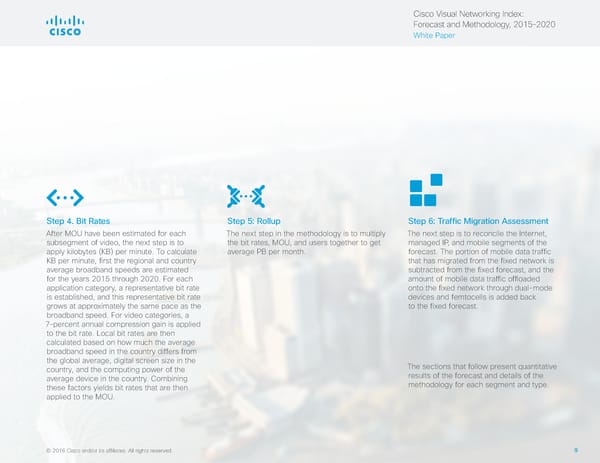Cisco Visual Networking Index: Forecast and Methodology, 2015–2020 White Paper Step 4. Bit Rates Step 5: Rollup Step 6: Traffic Migration Assessment After MOU have been estimated for each The next step in the methodology is to multiply The next step is to reconcile the Internet, subsegment of video, the next step is to the bit rates, MOU, and users together to get managed IP, and mobile segments of the apply kilobytes (KB) per minute. To calculate average PB per month. forecast. The portion of mobile data traffic KB per minute, first the regional and country that has migrated from the fixed network is average broadband speeds are estimated subtracted from the fixed forecast, and the for the years 2015 through 2020. For each amount of mobile data traffic offloaded application category, a representative bit rate onto the fixed network through dual-mode is established, and this representative bit rate devices and femtocells is added back grows at approximately the same pace as the to the fixed forecast. broadband speed. For video categories, a 7–percent annual compression gain is applied to the bit rate. Local bit rates are then calculated based on how much the average broadband speed in the country differs from the global average, digital screen size in the The sections that follow present quantitative country, and the computing power of the results of the forecast and details of the average device in the country. Combining methodology for each segment and type. these factors yields bit rates that are then applied to the MOU. © 2016 Cisco and/or its affiliates. All rights reserved. 9
 Visual Networking Index - Forecasting & Methodology Page 8 Page 10
Visual Networking Index - Forecasting & Methodology Page 8 Page 10